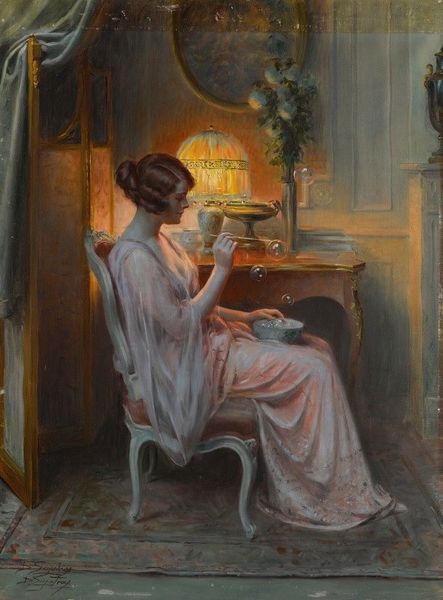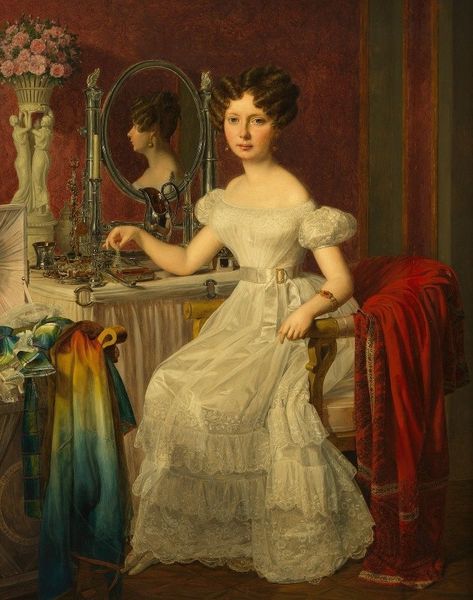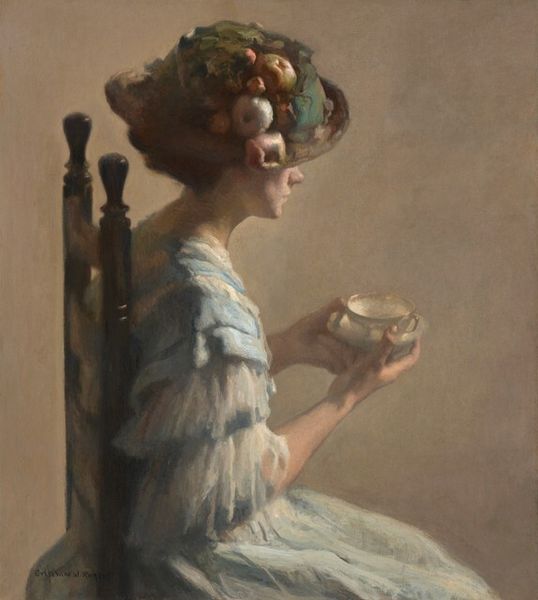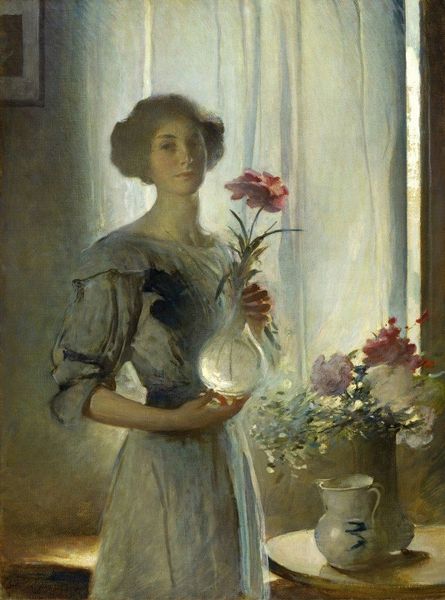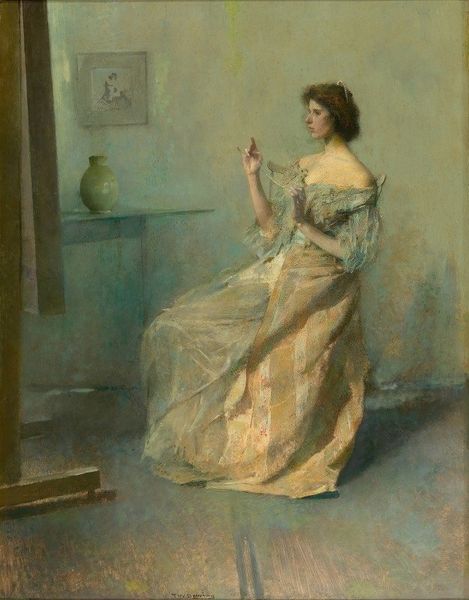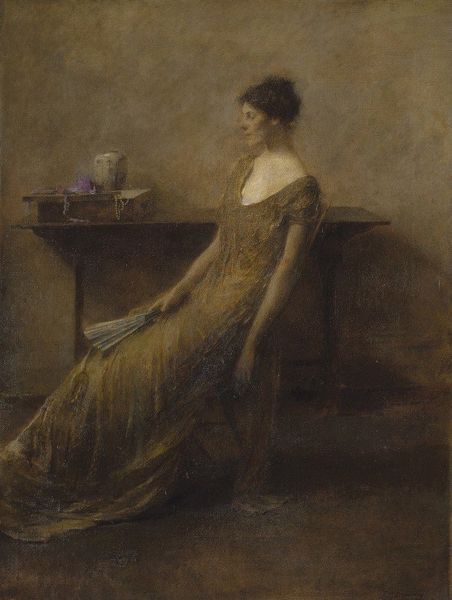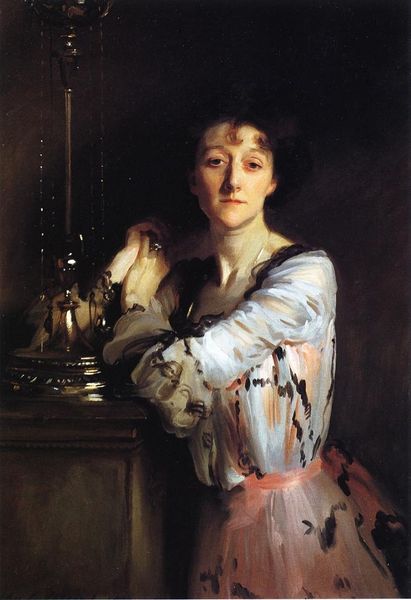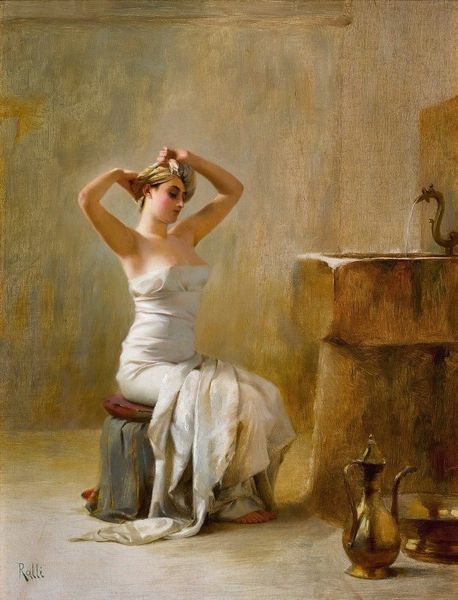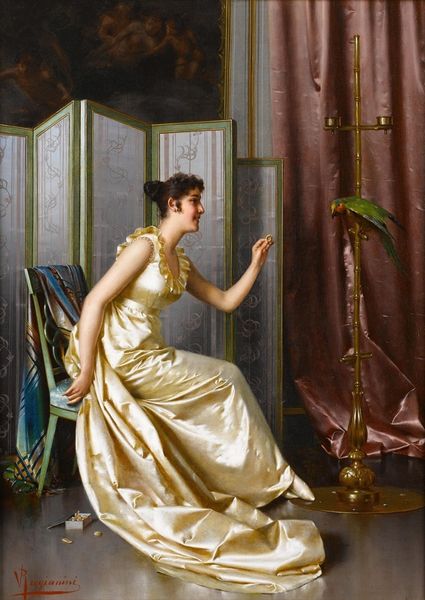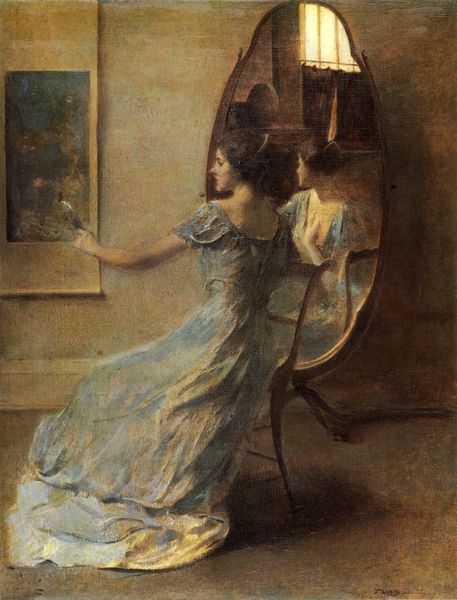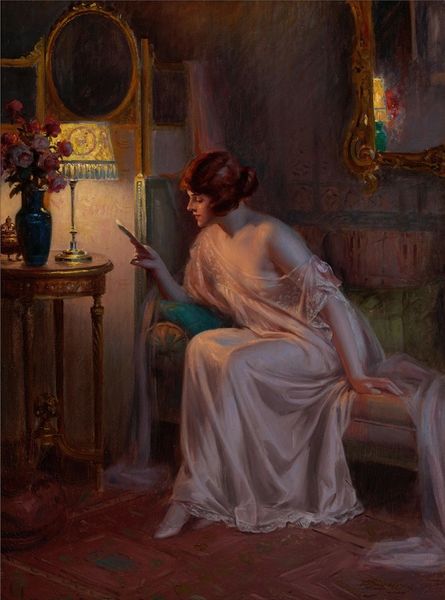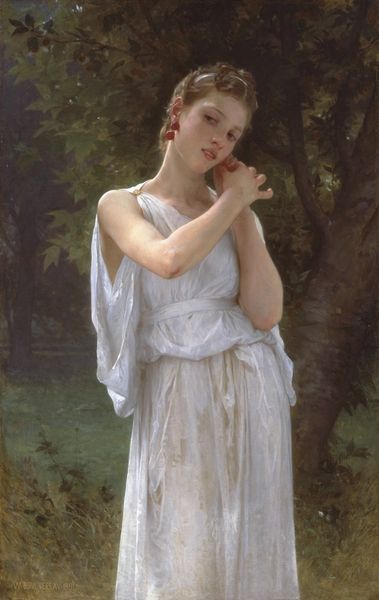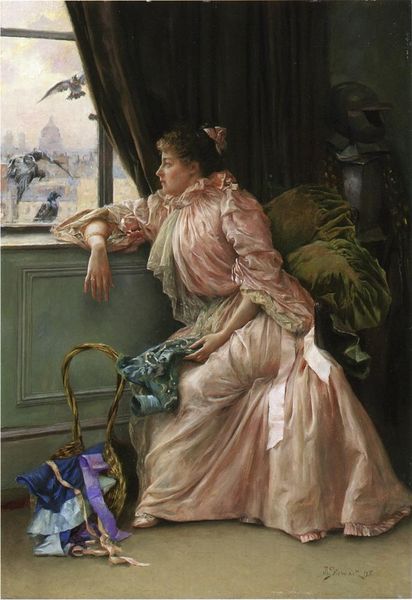
painting, oil-paint
#
painting
#
oil-paint
#
intimism
#
genre-painting
#
modernism
#
realism
Copyright: Public domain
Curator: Before us is "The Blue Cup", a painting crafted in 1909 by the American artist Joseph DeCamp, currently residing here at the Museum of Fine Arts in Boston. Editor: There's a wonderful glow to it. The light seems to catch the cup in the woman's hands, making it the focal point against what could otherwise be a rather drab, domestic scene. Curator: It’s a quintessential example of American Intimism, a genre that captured private moments within the domestic sphere. We see a young woman holding up what appears to be a delicate blue cup, examining it in the light. It reflects the artistic movements during a time when the figure, especially of women, began to occupy a central position in portraying everyday narratives. Editor: And the means by which he achieves that light – the almost translucent quality of the white apron, contrasted with the darker dress and background. What kind of oil paint was he using here? And how did that impact the painting's surface? DeCamp really draws attention to the materials and labor involved in its creation, challenging conventional notions of art's value. Curator: DeCamp was known for his meticulous technique, heavily influenced by his academic training and his interest in the Old Masters, notably Vermeer. He achieved that luminosity through careful layering of oil paint. The woman’s role should also not be understated—positioned at the heart of these changing societal norms where their labor and presence became visibly articulated. Editor: Precisely! The layering isn’t just technique—it’s revealing the work. We are looking at the construction of a particular middle-class existence, a still-life tableau carefully managed and maintained. Her gesture—examining the cup—becomes symbolic of appraisal, of judging the objects by which this life is constructed. The making, maintenance, and display is central to this genre. Curator: Her gaze draws the viewer into this private act, suggesting contemplation, almost an aesthetic evaluation. DeCamp gives prominence to objects used in the domestic sphere during the modernization era as a form of social commentary. Editor: Exactly. DeCamp compels us to observe the material culture being meticulously cultivated. The "blue cup" itself, an everyday object elevated through artistic intervention. What kind of cultural cachet does the scene imbue to this everyday ware, particularly with its current home being the Museum of Fine Arts in Boston. Curator: It’s intriguing to consider that as the artwork enters public institutions, how meanings shift—from a personal possession to a commentary on class and labour, perpetually reshaped by new audiences and new social contexts. Editor: It invites reflection not just on the depicted moment, but on our own relationship with the objects that surround us and give meaning to our lives. The quiet intensity of this woman's observation is something each viewer can understand.
Comments
No comments
Be the first to comment and join the conversation on the ultimate creative platform.
